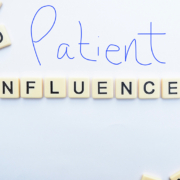It’s not what you think
It’s not what you think
Kristen Hartman of Health Union explores misconceptions about influencer marketing with patient leaders.
Misconception No. 1: Influencer programs are high risk.
A common misconception is that these types of partnerships are not regulated by FDA like other content, and that it is the “Wild West” of DTC marketing. That couldn’t be further from the truth.
Regardless of whether a partnership is specific to a brand or more broadly about a condition, all programs go through the same rigorous review process and are held to the same standards as any other promotional content that the marketing team would create.
Misconception No. 2: Patient influencer marketing is the same as celebrity or lifestyle influencer marketing.
For decades, brands have been partnering with celebrities on endorsements and marketing campaigns, and some still have the misconception that patient influencer marketing operates in the same way. But patient influencers are very different from celebrity or lifestyle influencers and require an entirely different philosophical approach and strategy to partnership.
Celebrity/lifestyle influencers have large followings, and followers tend to consist of broader audiences than just people living with the medical condition that they may have, and their content is broader in nature than just medical condition content.
Patient influencers tend to have smaller followings than celebrity/lifestyle influencers, but their content is tailored specifically to their audience of patients living with and navigating the condition(s) that they share.
They have built a well-established foundation of authenticity and trust in their communities and in living with, or caring for, someone with the condition of which they are speaking; they lend a more sophisticated level of experience that can help to support, validate, and educate their followers.
According to a 2020 study from WEGO Health (now Health Union) surveying 263 patient leaders, patient influencers have greater trust than lifestyle influencers, with 14 percent of respondents mostly/completely trusting lifestyle influencers and 51 percent mostly/completely trusting patient influencers.
Patient influencers are also more likely to drive medication research behavior, with 25 percent of respondents mostly/very likely to research medication shared by a lifestyle influencer versus 52 percent mostly/very likely to research medication shared by a patient influencer.
Ultimately, influencer marketing partnerships with patient leaders are fundamentally about authenticity and transparency rather than reach and celebrity.
Read more about Hartman’s perspective on patient influencer marketing.




